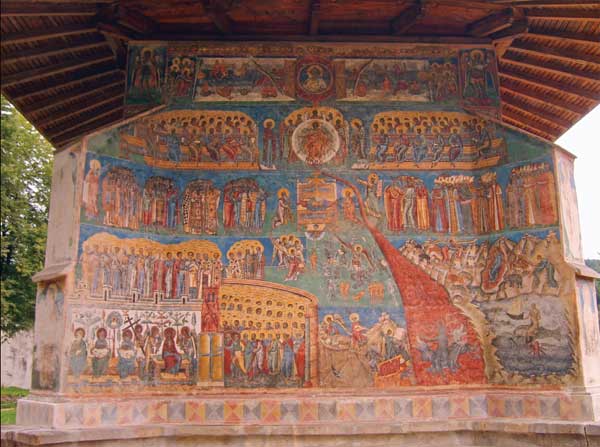Biblical Archaeology Review 34:1, January/February 2008
Strata: Painted Churches Weather the Elements

The golden halos of saints crowd the registers of The Last Judgment, a massive fresco on the back wall of the
Church of Saint George of Voronet¸ Monastery in Romania. The elaborate composition and
vibrant colors make it easy to see why the monastery has come to be known as the “Sistine Chapel of the East,”
but these frescoes aren’t shut away in a stuffy chapel or hidden in a dark basilica. They’re painted on the
outside of the building for all to see.
Voronet¸ is just one of a handful of Romanian monasteries known as the painted churches of Bucovina, located in
the northern province of Moldavia. The Romanian Tourist Office is encouraging tourists to visit the monasteries, which are
listed on its Web site as a featured attraction and described as some of the “most picturesque treasures of
Romania.” According to Simion Alb, director of the Romanian National Tourist Office for North America, the churches
are a particular draw for those interested in Byzantine art and architecture.
The churches, which date to the 15th and 16th centuries, were built by a Moldavian nobleman named Stephen the Great to
commemorate his military victories over the Turks. The interior and exterior walls of the monasteries are covered with
frescoes of Biblical scenes, figures and symbols. These paintings served to educate the illiterate public about Bible
stories. They also served as spiritual inspiration for those unable to crowd inside the cramped buildings during mass.
Join the BAS Library!
Already a library member? Log in here.
Institution user? Log in with your IP address.

